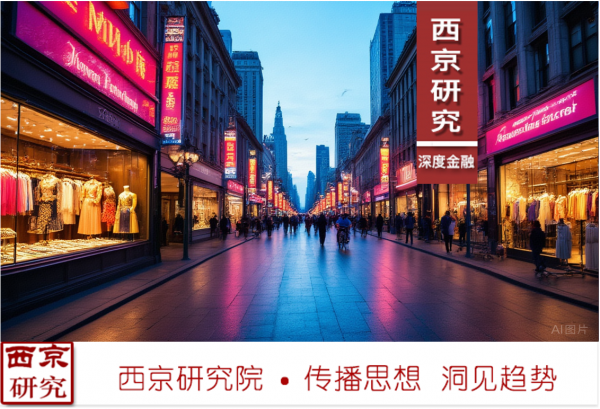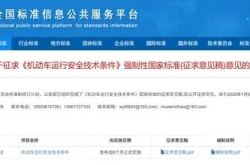"Reality Ten Questions 4" Zhao Jian: When Will the Real Estate Market Reach Its Lowest Point?
![]() 11/17 2025
11/17 2025
![]() 537
537

This article marks the 873rd publication by the Xijing Research Institute and the 810th original piece by Dean Zhao Jian. To gain firsthand access to major reports and unlock a range of benefits, including exclusive member live streams, internal publications, premium networking groups, and more, simply scan the QR code at the end of the article to join the Xijing Research Institute's membership program. Stay informed and ahead of the curve.
Dr. Zhao Jian is set to launch the "Reality Ten Questions" series, drawing from his recent reflections on macroeconomic trends and market dynamics. This series will address pressing questions that investors are keenly interested in.
1. What is the current economic situation? In brief: accelerating towards a downturn, with an urgent need for action.
2. What is the policy approach being taken? In brief: overexertion in the first half of the year, followed by caution in the second half.
3. How long will the bull market persist? In brief: digesting disagreements, consolidating strength, with the strong continuing to thrive.
4. When will the real estate market reach its lowest point? In brief: a prolonged transition, accelerating towards a trough, with the potential for a rebound.
5. When can we expect prices to rebound? In brief: awaiting the real estate market to hit bottom or for the bull market to sustain a gradual rise.
6. With savings at an all-time high, where will the money flow? In brief: structural differentiation, with a rush towards strong assets.
7. Will the RMB exchange rate appreciate or depreciate? In brief: facing relatively greater appreciation pressure, with the future depending on the central banks of China and the US.
8. Has the bond market rally come to an end? In brief: a weak rally for weak assets, akin to a chicken rib - not very satisfying.
9. Will gold continue its surge? In brief: the trend remains intact, with prices positioned within the "Chinese-style Bretton Woods system."
10. What can we anticipate from the "15th Five-Year Plan" market? In brief: "Internet+" in the 13th Five-Year Plan, "Big Data+" in the 14th, and "Artificial Intelligence+" in the 15th.
When assessing China's economic situation, the current focal point lies in the real estate sector. As a cornerstone of the national economy, accounting for over 30% of both GDP and employment, its profound transformation carries significant implications. It can be argued that until the real estate market stabilizes or returns to a normal state, it will be challenging for the Chinese economy to do the same. So, has the real estate market reached its lowest point? The preliminary assessment suggests that it is still on a downward trajectory, with necessary conditions for stabilization in terms of supply-demand dynamics and value attributes. However, the financial and fiscal dimensions have not yet been effectively addressed, and caution should be exercised to prevent systemic risks arising from irrational declines in real estate prices.
The greatest uncertainty lies in the decision-makers' stance towards the real estate sector. From the policy orientation of the past six months, whether at the Political Bureau meeting or the Fourth Plenary Session, real estate has been integrated into the realm of people's livelihoods. The fundamental policy direction remains to "foster high-quality development of the real estate sector by establishing a long-term mechanism for its growth."
This implies a consensus among current high-level leaders to avoid excessive reliance on real estate or stimulating demand through debt for "high-quality development." It also suggests that under the "real estate-economy" duality, whereas in the past, "real estate rescued the economy," today, "the economy must rescue real estate." Leveraging endogenous demands such as consumer spending, manufacturing investment, and exports to gradually revive the cooling real estate sector may represent the current decision-makers' basic policy orientation. However, at this stage, it is not yet the time for the economy to warm up the real estate sector; instead, the chill from real estate is making the economy increasingly cold.
Nevertheless, the rebalancing force triggered by China's "de-real estateization" should not be underestimated. The severe adjustment in the real estate sector has made China's production factors more affordable, leading to a significant divergence where "the world is experiencing inflation while only China is facing deflation." The positive impact of this divergence on the Chinese economy lies in: first, stable and affordable prices reduce the actual living costs for low-income and fixed-income groups, lowering the likelihood of social risks during the transition; second, the deflation of the real estate bubble reduces innovation costs, stimulating innovation vitality. The low-cost advantage, combined with industrial innovation and upgrading, has once again made "Made in China" renowned and dominant globally. China's exports have surged in the past three years, even amidst Trump's tariff wars and increasingly complex geopolitical environments.
Thus, today, the dichotomy and unity between real estate and the real economy constitute the primary contradiction determining economic operations today and in the near future. In other words, whereas in the past, our research on China's economic situation may have involved various intertwined variables, each producing different impacts, requiring a comprehensive assessment, today's Chinese economy is influenced by an absolute variable: the profound transformation of the real estate sector. Therefore, judging China's economic situation over the past three years from a broad perspective is actually quite straightforward: if real estate does not stabilize, it will be difficult for the Chinese economic situation to stabilize in terms of aggregate indicators. This judgment has now become a basic consensus in macroeconomics. The remaining research should focus on analyzing China's real estate trends, such as when it will stabilize, how it will do so, what are the necessary conditions for stabilization, whether it will rebound after stabilization, and how much rebound space there is.
A commonly employed method is historical comparison, examining past experiences of real estate cycles in other countries and comparing them with China's situation. This represents an advantage of China's real estate transformation today, often referred to as a latecomer advantage. The primary benefit of this advantage is having experiences to learn from and emulate, allowing us to navigate based on other countries' and regions' experiences. As a latecomer in industrialization and urbanization, we have complete real estate cycles from developed countries such as Japan, the United States, and Germany to draw from, providing us with excellent frameworks for analyzing and predicting real estate trends. With historical experiences to compare, we can navigate with greater confidence. Japan and the United States can serve as our guides, certainly better than being in the dark. At the same time, we must recognize that China's real estate has many differences from other countries; we cannot make mechanical comparisons or cling to outdated views, assuming that because Japan did not recover for 30 years, we will not either, or that because the United States experienced a major crisis, China will too. That is not necessarily the case; China has its unique circumstances, institutional structures, and advantages as a large economy, especially having learned from the mistakes of preceding countries.
However, we cannot say that because China has its unique institutional advantages (financial control), advantages as a large economy, and advantages of deep industrialization, we can escape the objective laws of the real estate megacycle or the demographic megacycle. I believe it is difficult and impossible. Therefore, we should recognize the universal and objective cyclical laws of real estate while combining China's unique social, political, policy, fiscal, credit, and financial characteristics to assess trends and risks during China's real estate transformation.
First, it is reassuring to observe that during China's real estate transformation, there has been no systemic financial or fiscal crisis. Of course, it cannot be said that there are no problems; with declining housing prices and halved land transfer fees, the middle class with mortgaged homes and some local governments are facing difficulties. However, there has been no major crisis like those in the United States or Japan. Especially in the United States, the subprime mortgage crisis was devastating. Our credit structure, financial structure, and cultural structure of "valuing face and avoiding bankruptcy" are somewhat similar to Japan's. Our banks and financial institutions are state-owned, possessing strong financial control, so we have not experienced the harsh market-driven clearance like the United States. Of course, the United States' market-driven clearance also ensured its rapid recovery from the real estate bottom.
However, Japan's real estate stabilization process was very prolonged, taking nearly 18 years before housing prices slowly rose. In contrast, the actual housing prices in the United States may have stabilized in less than eight years. The reason for this difference is that the United States achieved one-time risk clearance through market-driven means, effectively distributing and dispersing risks by discounting real estate values. Two other factors are crucial: first, the personal bankruptcy system, which allows for one-time clearance of micro-level burdens, enabling families to start anew; second, the Federal Reserve's purchase of toxic assets, effectively assuming part of the systemic risk and thus clearing the real estate cycle.
In our case, we lack a market-driven clearance mechanism like the United States', which bought out toxic assets and nationalized systemic risks. At the micro-level, we also lack a friendly personal bankruptcy system to liberate people from being slaves to mortgages and debts, allowing for a quicker exit from the "prolonged transition season" and preventing economic stagnation. Of course, there are costs; the cost is the explosion of the U.S. federal government debt. Today, U.S. federal government debt exceeds $37 trillion, traceable back to the quantitative easing triggered by the subprime mortgage crisis.
Therefore, some say that the U.S. quantitative easing was a revolutionary financial transformation. Of course, it was also a crisis-driven transformation, credit to then-Federal Reserve Chair Ben Bernanke. Bernanke happened to be a researcher of the Great Depression, and his research findings aligned with reality: the severity and duration of the Great Depression were due to the lack of money in the economy. This was America's fortune, encountering the right person at the wrong time. During his research on the Great Depression, Bernanke understood that when a systemic crisis occurs, if the government does not act, credit market failures will cause a cliff-like drop in money supply, bringing enormous disaster to the economy. Therefore, after the U.S. subprime mortgage crisis, the Federal Reserve stabilized the situation quickly by injecting liquidity. Today, China's real estate has been officially adjusting for nearly four years. Today, we ask two questions: first, has it stabilized? Second, if it has, when will it return to an upward trend?
We say that reaching the bottom of this cycle is one thing, and rebounding from the bottom is another. Many asset prices reach the bottom but do not necessarily rebound; they may be locked at the bottom due to lack of liquidity or forced controls, possibly remaining stagnant for three, five years, or forever becoming junk assets. We have seen Japan's lesson; it took nearly two decades to stabilize and recover, wasting the best years of a generation. For China's real estate, my preliminary conclusion is that it has not yet stabilized and is still probing, but it is not far from the bottom.
Why is it still probing? Because we have not seen a significant clearance of leverage; the risk clearance of leveraged assets must be accompanied by severe price adjustments and credit explosions. Before inflation occurs, if there is no significant leverage clearance, we believe there is still room for price adjustments. Today, we can also see some signs of stabilization; the sign is that when real estate is calculated based on its residential or value investment attributes, i.e., its rental yield, it has approached or exceeded the average social investment return rate. Today, the real estate risk prevention battle has entered Phase 3.0; Phase 1.0 was handling corporate debt defaults, Phase 2.0 was ensuring project completions, and today is Phase 3.0, i.e., managing mortgage loan risks on the resident side.
Therefore, due to the lack of leverage clearance and low resident confidence in real estate, it is difficult to say that real estate prices have stabilized and show signs of rebounding or even reversing. However, I also disagree with many who say that housing will forever be a thing of the past and become junk assets. Real estate, for both the country and individuals, is an important wealth asset; it is just that today, we need to pay for the past era of wild real estate growth, and everyone is bearing the pain of real estate transformation. Real estate prices are not entirely impossible to recover; there were noticeable recoveries in the fourth quarter of last year and the first half of this year. This shows that as long as national policies dare to exert force, the real estate issue can still be resolved. It is just that in the past six months, policies have slowed down after being too aggressive in the first half, slightly adjusting the pace.
In the long term, the most significant pressure we face is the accelerating aging of the population, a fundamental factor that profoundly influences the nation's future. From a wealth standpoint, while real estate will continue to be a crucial part of both national and household wealth portfolios, its share will decline significantly from the past levels of 70% or 80%, dropping to below 50%. Consequently, over 20% of the current wealth composition will need to be reallocated, amounting to a staggering 100 trillion yuan. Which assets will step in to fill this void? Currently, gold stands as one viable option, while equity-based financial assets represent another. This shift is poised to trigger systemic changes in asset prices. Gold has already embarked on a super bull market trajectory, and Chinese equity assets are also undergoing a revaluation process, with the stock market enjoying a bull run that has lasted over a year. When it comes to asset allocation, the era of relying solely on real estate for wealth creation has drawn to a close, ushering in a new era of diversified wealth distribution. Faced with this major transformation, it is imperative that we do not repeat the mistakes of the past. (Zhao Jian: "We Are Once Again at a Historical Crossroads; We Cannot Afford to Repeat the Mistakes of the Past.")
[Disclaimer] This article exclusively reflects Dean Zhao Jian's personal academic perspectives and is intended to foster communication and discussion. The information provided is for reference purposes only and should not be construed as investment advice.







